DID YOU KNOW?
The Turquoise-winged Parrotlet is closely related to the Blue-winged Parrotlet (Forpus xanthopterygius).

Forpus

spengeli
Size:
12 cm (4.7 in)
Weight:
28 g (1.0 oz)
Subspecies including nominate:
one
Colour Adult:
Male-blue of lower back and rump more turquoise; turquoise/blue with purple underwing coverts and axillaries. Female-green instead of blue markings; green/yellow face but forehead more yellow.
Colour Juvenile:
Presumably as in Forpus xanthopterygius: As in adults, immature males have blue markings intermixed with green.
Call:
Calls in flight or when perched are sad sounding albeit penetrating. While feeding twittering and chattering.
More Information:
Content Sources:
BirdLife International
Cornell Lab of Ornithology/Birds of the World
Captive Status:
Uncommon
Longevity:
Probably 10+ years.
Housing:
2 x 1 x 2 m (6.5 x 3.3 x 6.5 ft) enclosure, or suspended indoor cage 120 cm x 40 cm x 50 cm (46.8″ x 15.6″ x 19.5″), with roosting box.
Diet:
Seed mix such as: millet, canary grass seed, weed seed, wheat and oats; millet spray, sprouted or unsprouted; fruit such as: apple, pear, orange, banana, pomegranate; vegetables such as: carrot, celery, green beans, peas in the pod; berries such as: rose hips, mountain ash (rowan); green leaves such as: Swiss chard, dandelion, chickweed, lettuce; insectivorous food; complete kibble if taken.
Enrichment:
Provide tree stumps, branches (are avid chewers); areas for bathing.
Nest Box Size:
Nest log 15 cm (6″) in diameter, 30 cm (11.7″) high or 6″ x 6″ x 6″ (15 cm x 15 cm x 15 cm) vertical box.
Clutch Size:
3-7
Fledging Age:
35 days
Hatch Weight:
—
Peak Weight:
—
Weaning Weight:
—
World Population:
Unknown, but described as uncommon. Decreasing.
IUCN Red List Status:
Least Concern
CITES Listing:
Appendix II
Threat Summary:
The overall range of this species is quite small and numbers have perhaps declined. No knowledge of population size or specific threats, although the species may be trapped like congener F. xanthopterygius. The species is considered to have a medium dependency on forest habitat and tree cover is estimated to have declined by 13.6% within its range over the past 10 years. Therefore, it is tentatively suspected that this may have led to a population decline of 1-19% over the same period.
Range:
Restricted to N Colombia, from Caribbean coastal region west and south of Santa Marta mountains, Atlantico, south along Rio Magdalena in Bolivar and Cesar.
Habitat:
Prefers drier wooded habitats such as open and riparian woodland, cerrado and caatinga; also found in savanna, palm groves, semi-arid scrubland and pastures.
Wild Diet:
Eats fruits and seeds of Cecropia, seeds of Mikania, Rhipsalis sp. (pulp and seeds) and Trema mirantha. Also flowers and fruits of Ambrosia polystacha and Marcgravia polyantha, and fruits of Cereus jamacaru and pulp of Ficus enormis. Has also been observed eating clay.
Ecology and Behaviour:
Will forage in the open and sometimes on the ground. Highly social; found in groups of up to 50 individuals.
Clutch and Egg Size:
3-7 spherical to elliptical eggs, 19.0 x 15.0 mm (0.7 x 0.6 in)
Breeding Season:
May-October. Nest is cavity in tree (ie Cecropia), in termite nest, fence-post or in abandoned nest of Rufous Hornero (Furnarius rufus).
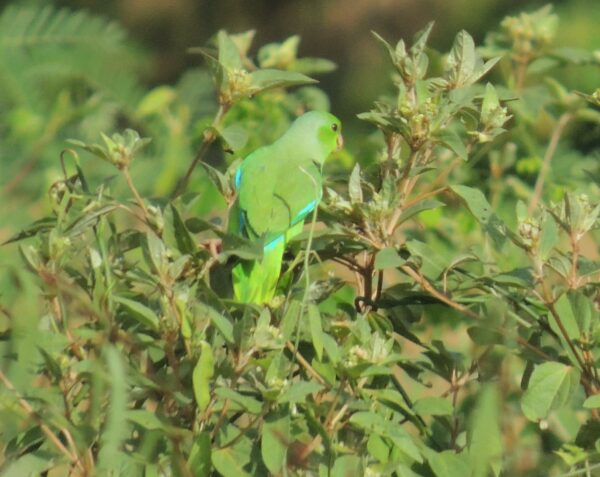
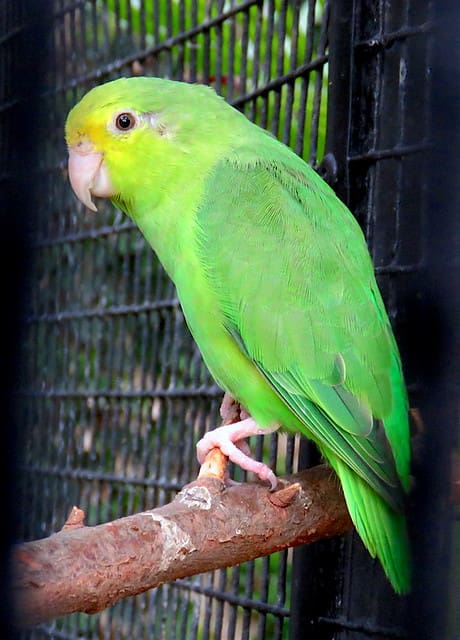
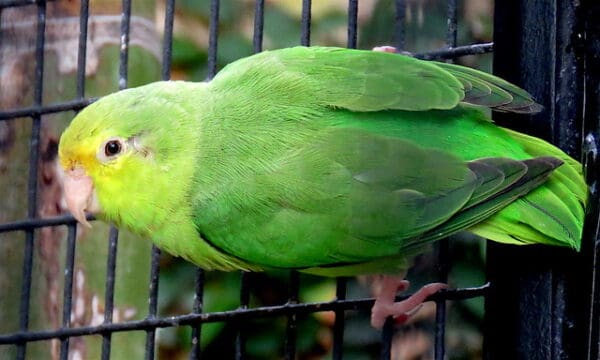
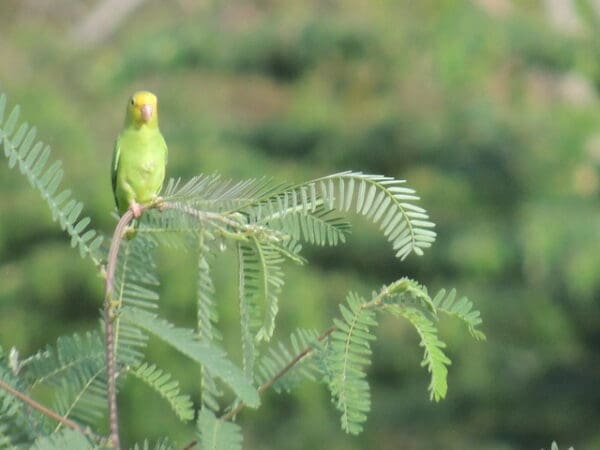
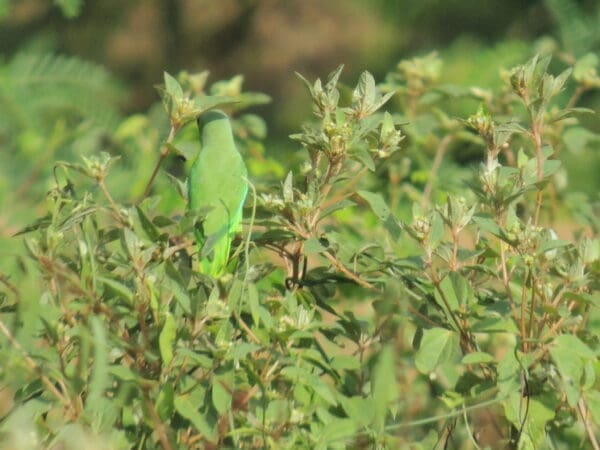

![© Juan Felipe Restrepo Mesa [CC BY-SA 2.0] via Flickr Wild Turquoise-winged Parrotlet forages in a bush](https://parrots.org/wp-content/uploads/1991/01/Turquoise-winged-Parrotlet-Juan-Felipe-Restrepo-Mesa-e1730915516894-100x100.jpg)
![© Florin Feneru [CC BY-SA 2.0] via Flickr A female Turquoise-winged Parrotlet perches on a branch](https://parrots.org/wp-content/uploads/2023/01/wpt_Turquoise-winged-Parrotlet_2005-5-100x100.jpg)
![© Florin Feneru [CC BY-SA 2.0] via Flickr A female Turquoise-winged Parrotlet clings to the side of a cage](https://parrots.org/wp-content/uploads/2023/01/wpt_Turquoise-winged-Parrotlet_2005-4-100x100.jpg)
![© Juan Felipe Restrepo Mesa [CC BY-SA 2.0] via Flickr A wild female Turquoise-winged Parrotlet perches on a tree](https://parrots.org/wp-content/uploads/2023/01/wpt_Turquoise-winged-Parrotlet_2005-2-100x100.jpg)
![© Juan Felipe Restrepo Mesa [CC BY-SA 2.0] via Flickr Wild Turquoise-winged Parrotlet forages in a bush](https://parrots.org/wp-content/uploads/1991/01/Turquoise-winged-Parrotlet-3-Juan-Felipe-Restrepo-Mesa-100x100.jpg)
![© Juan Felipe Restrepo Mesa [CC BY-SA 2.0] via Flickr Wild Turquoise-winged Parrotlet forages in a bush](https://parrots.org/wp-content/uploads/1991/01/Turquoise-winged-Parrotlet-2-Juan-Felipe-Restrepo-Mesa-e1730915011830-100x100.jpg)